Octave Chanute: (Otto Lilienthal, Wilbur Wright, Charles Lindbergh)
A dramatic example of Evolution: Do you realize that the flightless bridge is a type of ancestor of the aircraft? Evolution is all around us, not to be confused with the imaginary Mental Virus disease that has hi-jacked the name of the vital creative process. Octave Chanute was an admirable man and he illustrated several really important principles; no one hold all the cards, positive progress isn’t accidental, and the Life and Freedom package needs to be seen as something bigger than individuality. We are all a bit like Siamese twins – linked and dependant!
Octave Chanute, a land locked civil engineer, is credited with having a large impact on the achievement of human flight but a big portion of his early life was taken up with construction projects and bridge building. He designed and was involved with the construction of the two largest stock yards in the USA as well as designing and being involved in building several major US bridges. He also introduced treated ties that impacted the rail line business. But at the age of 24 he witnessed a balloon flight which tweaked his interest such that at 51 years of age he started to devote considerable time to promoting the efforts to achieve human flight. He began work on a book, eventually published and called “Progress in Flying Machines” at the same time Otto Lilienthal started working on gliders in Germany. Chanute was involved with designing gliders at the same time as Lilienthal, he was in touch with many flight experimenters including Lilienthal, and was encouraging and shared information freely. He had significant involvement with the Wright Brothers starting around 1900 when they contacted him to secure his flight book.
Chanute is credited with introducing the strut wire braced wing design to his biplane gliders, a copy of the Pratt truss that he was familiar with in bridge building. Thus the structural link between the bridge and the first aircraft. Many individuals were struggling with the flight challenge and Chanute was admirable in his selfless promotion of the effort and his encouragement of the exchange of ideas and experience. Otto Lilienthal made a great contribution but lacked a card in the form of understanding the subtleties of wing aerodynamics. An unintentional bad wing design caused his glider to unexpectedly crash resulting in his death. The Wrights encountered the same natural principle before they recognized the shortcomings in Lilienthal’s research but were able to adapt and get past that minor road block to safe flight.
Once the Wrights got into the air they put a great deal of effort into enforcing their patents to the extent that Wilbur died of a bout of Typhoid Fever that was linked to his being burned out from the efforts he exerted in legal battling. Chanute was very critical of the Wright’s seemingly selfish approach and Wilbur’s tragic death gave Chanute’s wise evaluation added credibility. Wilbur's impact also resulted in France, not impacted by US patents, surging ahead in aircraft development.
The progress in flight has raced ahead with thousands of minds attacking the field. The exchange of ideas and experience lead to remarkable results. All of this was due to the process of evolution, a process of mind power, creative power, time, and experience. Take out the mind power / creative power factors and productive evolution evaporates and rapid collapse replaces it. Studying the steps that lead to the first successful flights illustrates that such progress is the result of tiny steps and refinements that demand creative thinking and doing. Minds may often stumble on ideas and principles and unusual circumstances, but you don’t stumble if you aren’t walking, and even walking requires a complex mind and physical capability!
The contributions and failings of Lilienthal, Chanute, and Wilbur Wright are a wonderful illustration of the “no one has all the cards” principle. Each of them had a real impact on the achievement of manned flight and it can be argued that the removal of any one of the creative entities would likely have changed, and likely slowed, history. None of them did the entire job but the combination delivered a major advance. The Wrights got the major initial limelight but their post flight contribution was seriously hindered by a somewhat negative mindset and operating style that Chanute had avoided during his life.
These personalities are all off the stage now but their lessons are written on history and none of them have a patent on their useful examples! Glen Curtis accused the Wrights of suing anyone who flapped their arms. Curtis may not have understood all the influences that made Wilbur Wright and both men likely had their failings – again – history is a great teacher and a mirror of our own day to day lives. Look at history and it is simple to see a reflection of yourself as well as a reflection of events swirling around you.
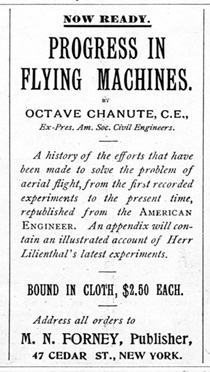
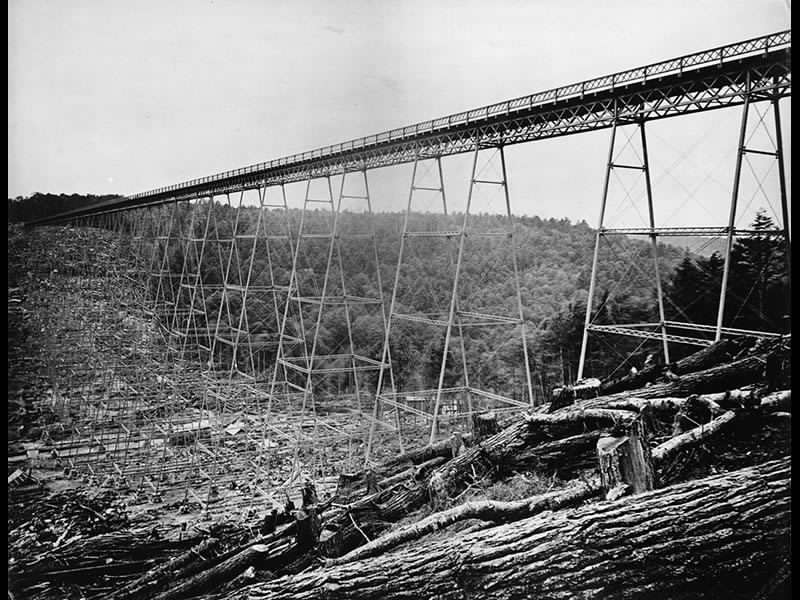
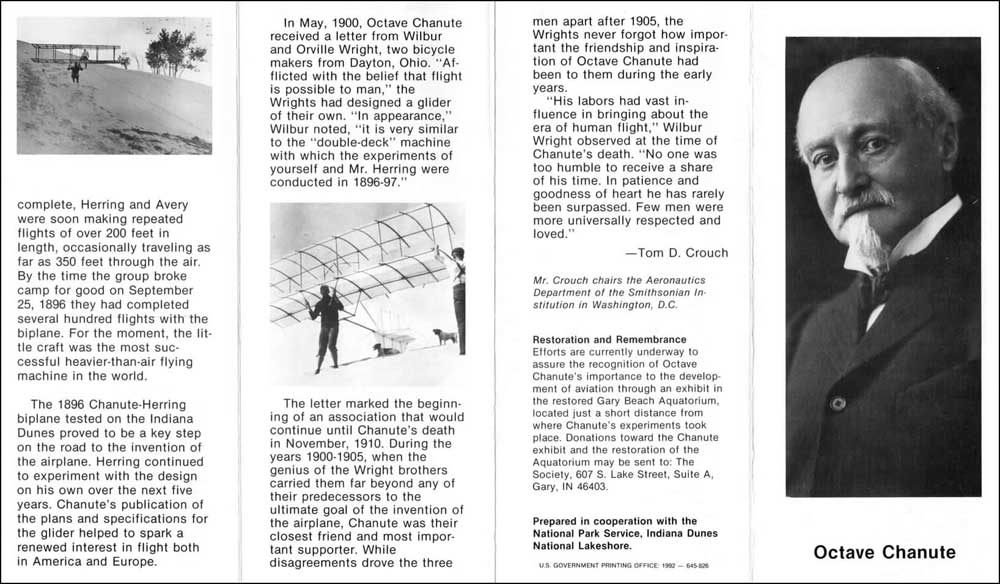
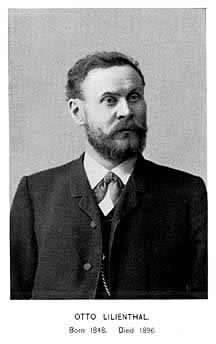
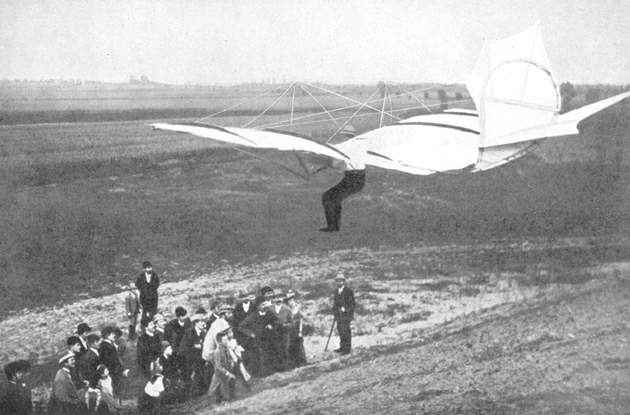
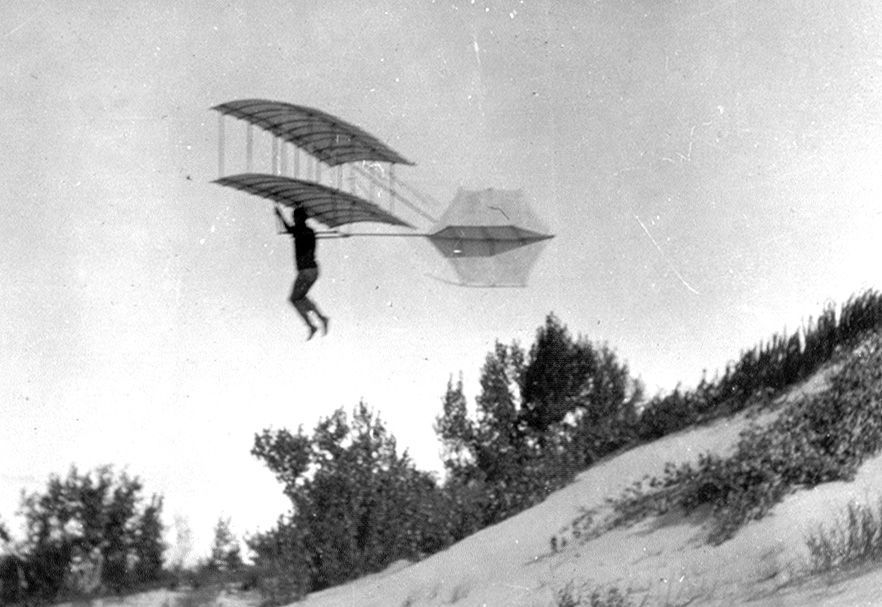
One of Chanute's bridges. Chanute was an accomplished civil engineer and he applied his engineering and analytic skills to the manned flight effort. As mentioned earlier, the Pratt strut that was used on early biplanes was inspired by Chanute's bridge work.
Chute's book was assembled from a series of lectures.
Otto Lilienthal was working on gliders at the same time Chanute was active. Lilienthal was an intelligent man and was making good progress but an unfortunate misunderstanding of air flow principles resulted in a glider nose dive and Otto was killed in the accident.
Chanute was older when he started pushing at the flight problem but he assisted other enthusiasts who did the actual test flights. Here we have a glider that Chanute either designed or had a major influence in.
Just because a person is a proven genius or winner in one area does not elevate them to God Status, and in reality, almost assures that they will have some other area of incredible weakness. On the other hand, just because a person has highly visible and rather dramatic failings, doesn’t mean that they do not have one or more areas of valuable strength. For any one person or for any group of people to lose sight of this seemingly designed fact of human existence, means that delusional personal egotism or cultic dictatorial control of a group can strike like a disease – a mental virus. The perception of a basic fact of our reality becomes warped and our immunity to a serious perceptual disease becomes compromised. Often the disease that strikes is widespread – a pandemic. On the other hand, a broad negative perception of an individual can prove to be a mental blockage that prevents the utilization of some amazing gift that the individual, or group, is able to freely give. The concept that no one holds all the cards but that everyone has at least one card is a Reality that is very useful to have a clear perception of!
I feel that Wilbur Wright’s combination of strengths and weaknesses illustrates this point. The example of Charles Lindbergh, a slightly later flight pioneer also illustrates the principle. Lindbergh had a somewhat jumbled childhood but seemingly lived a charmed life – an outlier loner who unexpectedly conquered the Atlantic with his New York to Paris non stop solo flight – a tall, handsome, modest, intelligent, well spoken youth – a highly influential, world scale player for much of his life – a deep thinker who thought his way through life but was likely guilty of some fairly major perceptual blunders despite his obvious intelligence. Lindbergh had a style that was seemingly hard on those close to him and long after his death, a man who seemed to have a solid marriage was revealed to have had two if not three separate families – no doubt somewhat of a shock to his main public family!
One interesting characteristic of Lindbergh was his appreciation of the interconnections of mankind. Despite his impressive Lone Eagle style, he recognized that his flight achievement was an extension of broad human effort. His plane, known to most as the “Spirit of St. Louis” was named “We” by Lindbergh and that name was also the title of the book that was published detailing the first account of the flight.
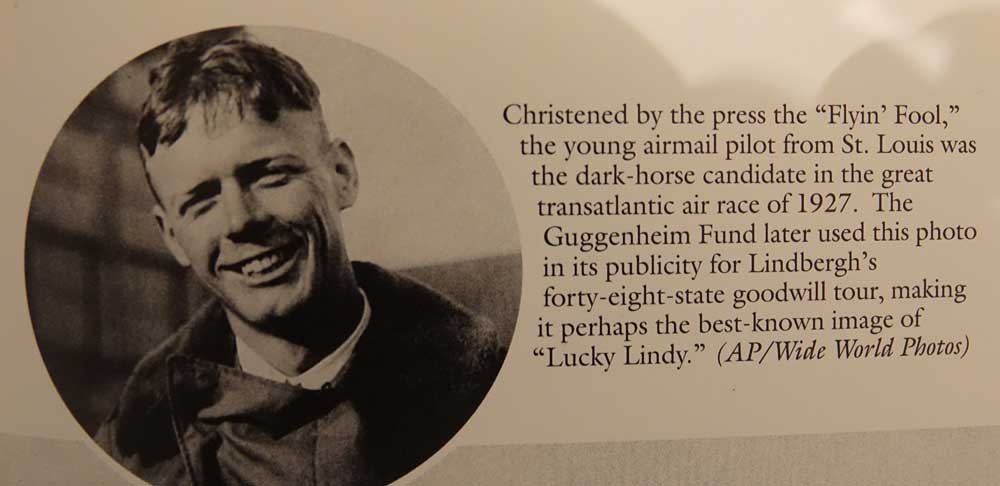
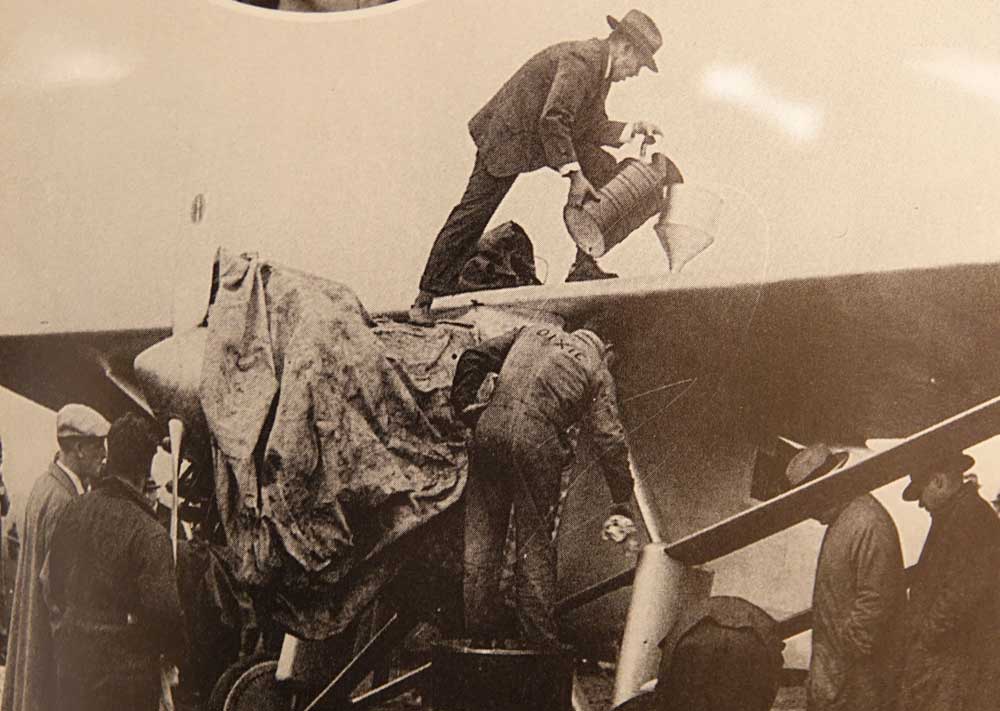
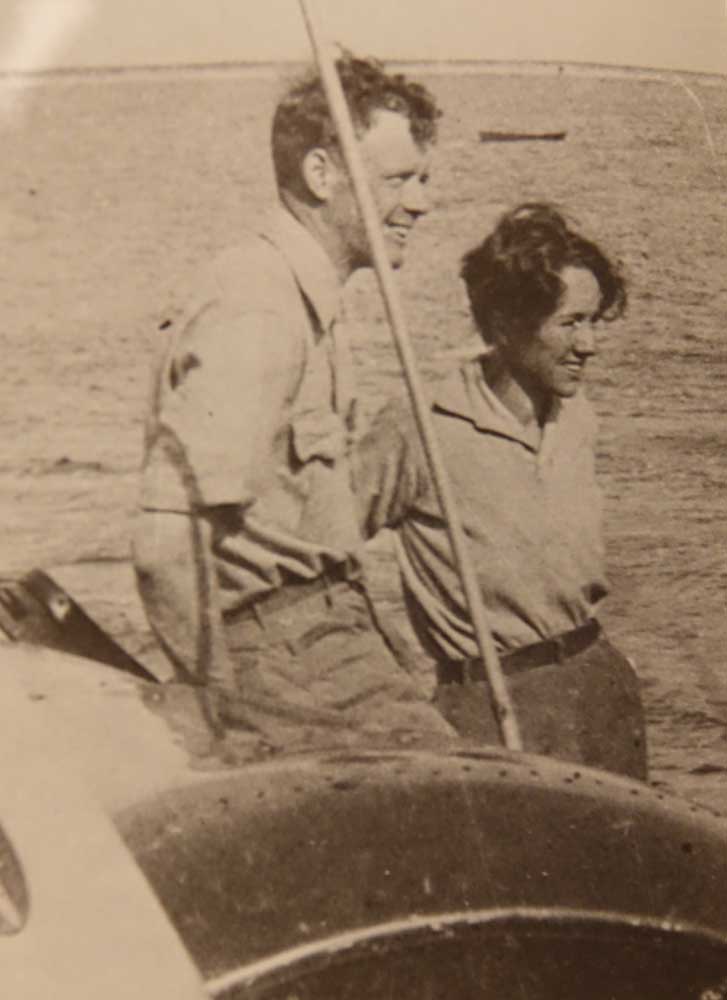
The Spirit of St. Louis / We - is fueled prior to Lindbergh's epic flight.
Lindbergh married the daughter of a wealthy Wall Street banker. It seemed like a fairie tale marriage but after Charles died, the complexities and gaps in his life became more obvious. Fate took him for a wild ride and perhaps he did well considering the pressures that impacted on him. Few people have ever been caught up in a tornado of circumstances on a level comparible to the forces that blew on Lindbergh.